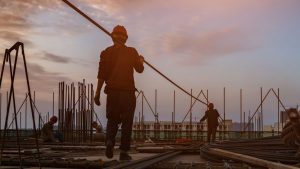A change in its basis and a new format are complicating the transition to B.C.’s new building code.
Building Codes
A change in its basis and a new format are complicating the transition to B.C.’s new building code.
The new B.C. Building Code, which took effect on December 15, 2006, is based on the national building code of 2005 and incorporates technical changes made to the B.C. Building Code of 1998. The new code applies to all buildings constructed on or after December 15, 2006, except those buildings for which a permit application has been accepted prior to that date. In addition, the code is objective-based rather than prescriptive, meaning that buildings have to meet the objectives of the code but no one solution is necessarily prescribed.
George Humphrey, chief building inspector for the City of Burnaby and chair of the code change steering committee of the Building Officials’ Association of B.C., said the degree of change in the current code is more significant than in previous revisions.
“It really is a foreign document,” he said. “The industry has gotten used to how the code was structured in the past, so you’re having to deal with a new form for the code, a new framework – the objective-based framework – a new organization of the code, plus all the changes. So it’s going to take some time for people to get used to it.”
One of the major changes to the code, Humphrey said, is the requirement for homebuilders to abide by rainscreen requirements for all residential construction, including single-family dwellings.
“Homebuilders are not used to it – they’ve never been exposed to the technology,” Humphrey said. “So you’ve got an industry that’s not used to this and having to somehow work their way through performance-based requirements. They’re not given some nice, easy ways to meet the requirement.”
To address the situation in the short term, companies that provide warranties on new homes are issuing generic details to builders that will meet the code requirements as well as minimize the potential risk the warranty companies face.
The Homeowner Protection Office is developing its own requirements, Humphrey added, underlining the diversity of solutions being prepared to address the new requirements. Asked whether the lack of a common opinion on what satisfies the code in the case of rainscreens for residential construction could be an issue, Humphrey said the diversity could be a good thing for the protection of consumers but may increase home prices.
“I would suspect insurance warranty providers are going to err on the side of caution than go the other way, so it’s probably going to be more of a Cadillac solution than a minimum solution,” he said of the details they’re providing. “It’s probably a good thing for the consumer; I’m not sure it’s a good thing, necessarily for the cost of the product. You may be getting something more than you need.”
The transition to the new rainscreen requirements also stands to slow down home construction in the short-term, Humphrey added. On the one hand, the details aren’t ready, and on the other, planners have to become familiar with the solutions submitted to satisfy code requirements. “I think for the first few months it’s going to be a problem for everybody,” he said.
A smaller change of significance regards the method for determining slope stability. Geotechnical engineers have frequently used it to analyze soils, but the changes didn’t take this particular application into account.
“There’s an awful lot of what we would consider safe properties that are being declared unsafe properties because of this new criteria,” Humphrey said.
He believes the province will likely mandate the use of the previous version of this section of the code until revisions take the alternative application into account.
Other revisions to the code address firewall requirements, dimensioning to improve the accessibility of structures and other matters.
The BOABC is hosting a series of 10 two-day workshops around the province in February and March to give building industry professionals an overview of the changes. More information regarding the workshops is available at www.boabc.org..










Recent Comments
comments for this post are closed